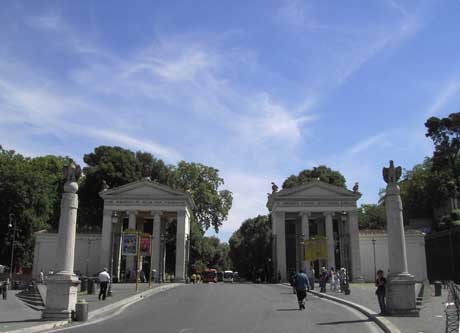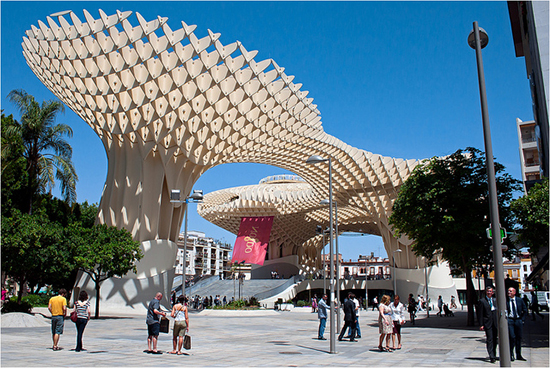Quartiere means neighborhood, although the Quartiere Coppedè isn’t exactly a neighborhood. Hidden in the bowels of the city, it is made up of 18 palazzos, noble constructions that are accompanied by other palaces and buildings. Amid these, there is a square called Piazza Minzio unto which the doors of the architectural structures open. It also has a fountain called Fontanna delle Rane (Fountain of the Frogs).

The complex formed by these buildings was designed by architect Gino Coppedè, after whom it is also named. Work began in 1913 and continued until 1927, which is when the last of the buildings that make up the complex was completed.
This range of years resulted in an mix of architectural styles as they were being built, and you can find a variety of elements from many styles. From the unique, free style of the architect to art nouveau detailing or even baroque art, these all come together in the facades and interiors of these palazzos.
This great variety means that no matter how many times you have visit this particular area of Rome, you are pretty much guaranteed to find some detail that you overlooked on a previous visit. And surprises are hidden in every nook and cranny, so it’s easy to miss one or more even after several visits.
The most prominent buildings there are the three homes that open to the Fontana delle Rane, especially the Villina delle Fate (Villa of the Fairies), which was built in 1920.
The spectacular nature of this area makes it a special place in the Quartiere Coppedè. And while all of this area is quite grand, it doesn’t reach the level of excellence that this very charming corner has.
The architect worked on the project until his death in 1927. The works that were left unfinished at that point in time were then completed by another great architect, Paolo Emilio Andrè.
One of the stories about this architectural complex has to do with cinema. The Italian horror film director Dario Argento found this part of Rome to be a great setting for some of the disturbing scenes one can see in his work. The spectacular and different structure of their buildings works very well with the dark and oppressive atmosphere of the films he has directed.
The main entrance to the area is created by a spectacular arch that joins two buildings. At the top of the arch, there is a large wrought iron street lamp, which invites visitors to immerse themselves in this almost dreamlike world and the surprises which await them. From the arch you enter a small street, at the end of which is the Piazza Minzio and the main buildings of the area.
To get to this interesting and lesser-known part of the city, take the tram lines 3 and 19 to the stop at the nearby Piazza Buenos Aires. From there, you walk down the Via Tagliamento, where you’ll find the arch that opens to the square.

 English
English

